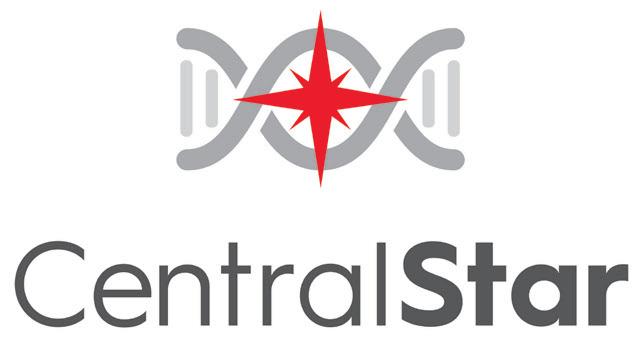
12 minute read
ReproStar Award Winners
ReproStar
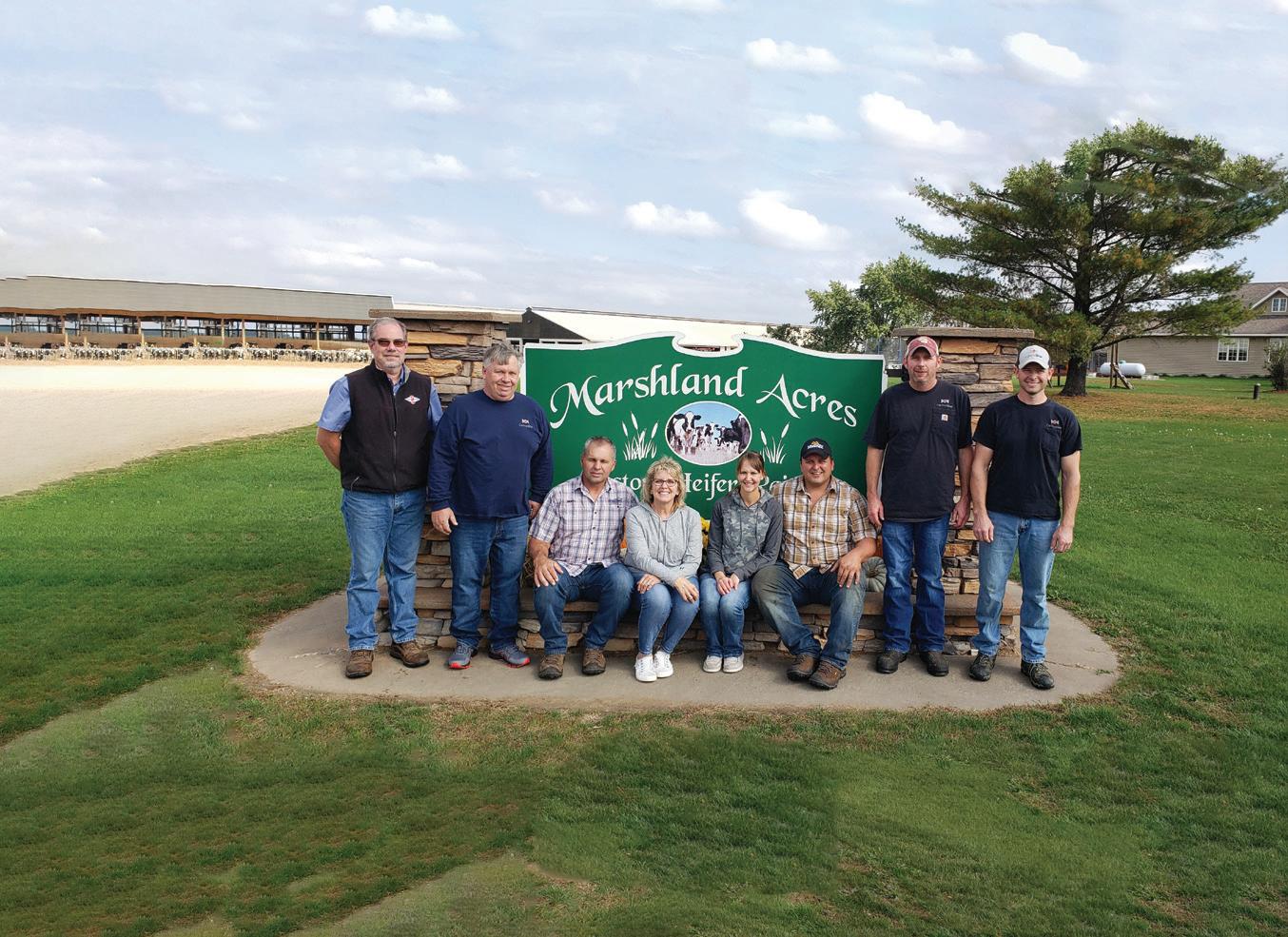
Award Winners
This years ReproStar award winners represent excellent efficiency in getting cows pregnant as evidenced by their pregnancy rate.
In addition, in this era of keeping older cows in the herd and getting them pregnant, these herds have good conception rates for third and greater lactation cows. High efficiency also means a high percent pregnant by three cycles and no cows more than 270 days in milk are open.
These six herds are the kind we are proud to work with and are excited if we contributed in some small way to their success!
Marshland Acres
Durand, Wis.
A custom heifer grower, Marshland Acres’ Wisconsin facility includes over 5,000 heifers from several different farms, with about 800-900 heifers in the breeding pens at all times. The program is focused on the final product… returning heifers back to dairies ready to calve at the proper age, in the right body condition so they can be a high producing, long-lasting member of their respective herds.
The reproduction program includes daily walk and tail paint with breeding performed through a team of CentralStar A.I. Specialists. “Over the last three years, we have made efficiency improvements in getting animals bred,” said Darin Klevgard, CentralStar Team Leader. “Tim Trones and Darrin Stein (A.I. Specialists) lead the efforts, but it takes help from other team members to keep it covered and get these results.”
Pregnancy is confirmed weekly by ultrasound and open animals are enrolled in a variety of synchronization programs based on the Veterinarian recommendation. The goal is to have 80% of all heifers pregnant within 30 days of their Voluntary Waiting Period (VWP).
Reproductive performance is analyzed monthly by Cole Mark, CentralStar Genetic Consultant, and benchmarked against other herds of similar size in the Midwest. By doing this, the farm is proactive in making improvements to the overall program.
“The main contributors to reaching 40% pregnancy rate includes having excellent technicians and a team that cares,” said Mary Weiss, co-owner of Marshland Acres. “You have to have good protocols in place – ones that the dairymen want; along with a balanced ration, and a good facility for everyone to work and operate in. It’s all about the people, protocols, rations, communication and facilities to get to this level and to keep improving.”
Marshland Acres has been in operation since 1995. Along with the Durand location, the Weiss family operates a second facility in Hershey, Nebraska.
Photo: Dave Loonstra, Tim Trones, Marty, Mary, Lousie, and Bronson Weiss, Darrin Stein, and David Franck.
Heifers
Pregnancy Rate
Conception
Submission Rates 36%
54%
67%
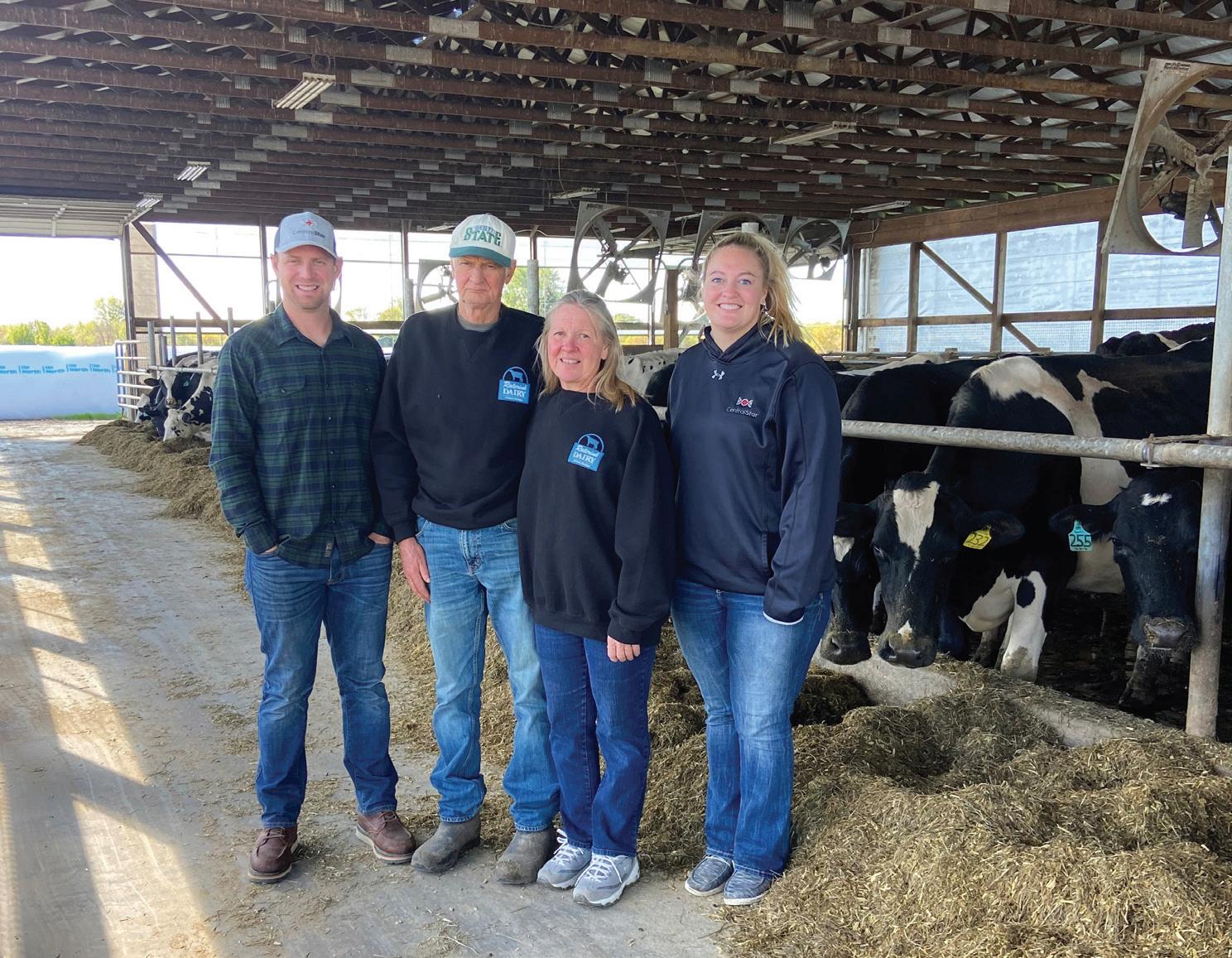
Raterink Dairy Farm Zeeland, Mich. Wepner Farms, LLC Manawa, Wis.
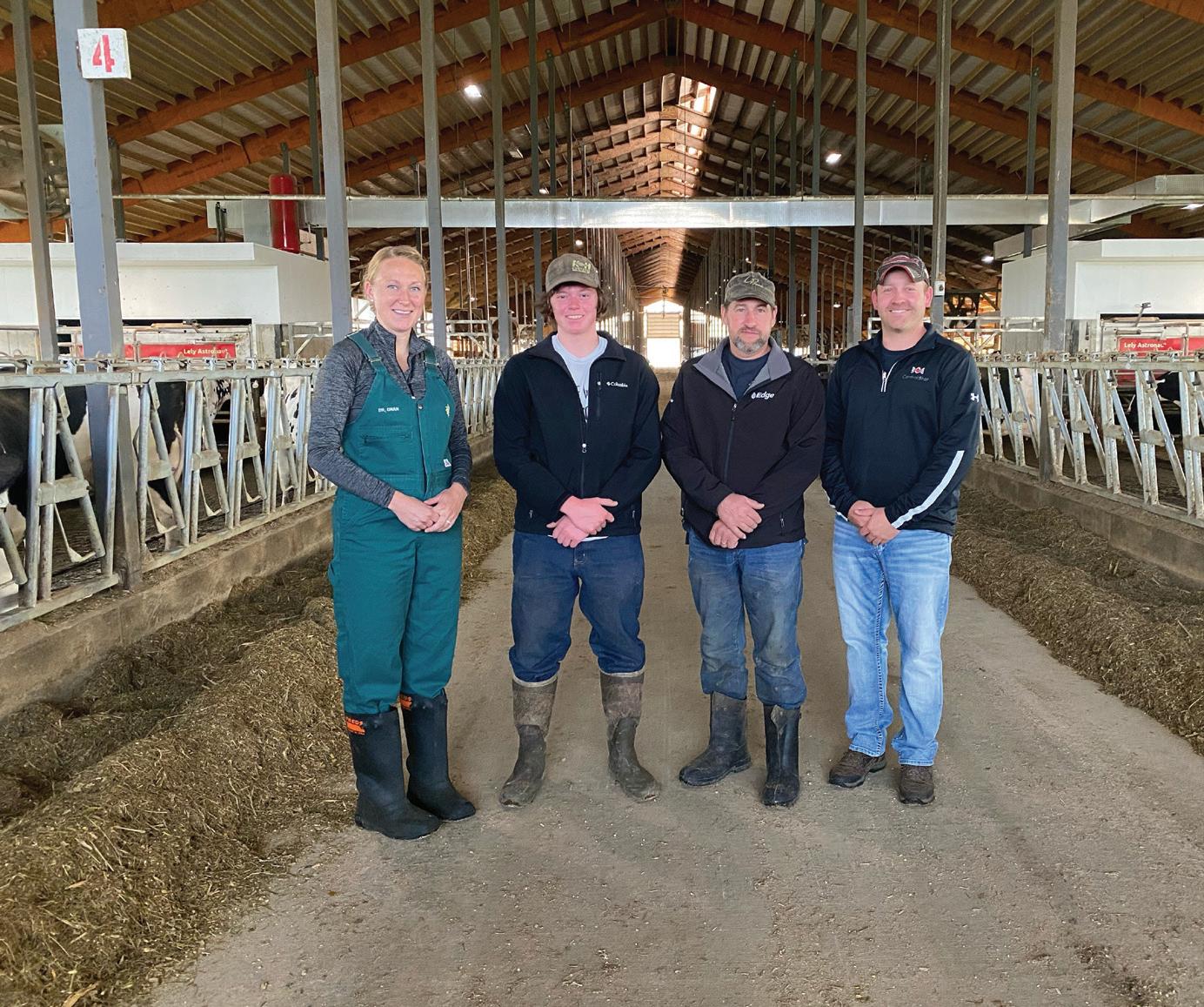
Environment, transition period, and consistency are the three main factors Mike Raterink, co-owner of Raterink Dairy Farm, sites for the herd’s 37% pregnancy rate.
“We try to provide a quiet, non-crowded environment for cows,” said Mike. “In January 2020 we separated first lactation animals from the rest of the herd, and we are now at 100% stocking density of freestalls for each group. This has helped immensely with our reproduction and production.” Along with those factors, the dairy strives to ensure balanced rations, that there is ample space at the bunk for each animal and that synchronization compliance is spot-on.
Seventy-five percent of breedings are completed based on natural heats, and 25% through a timed A.I. program. “Our goal is to breed them naturally, but when we have a cow that is anovular we use a program,” said Mike. The herd has had a lot of success with visual heat detection and Mike says his parents, Dennis and Brenda play a role in that. “Our farm is pretty animal specific,” shared Mike, “we are able to focus on individuals and that helps us get these types of results.” Teamwork, a more aggressive breeding program, tunnel ventilation and the use of electronic herd monitoring are all factors CentralStar A.I. Specialist Tyler Boyer says have contributed to improved reproduction at Wepner Farms.
“It is a total team effort that makes the reproduction so successful at this dairy,” shared Tyler. “The veterinarian, nutritionist, Jeff (Wepner) and I all communicate routinely to help identify any issues we need to address, or ideas to implement so we can continually improve.” Coowner, Jeff Wepner added, “good nutrition, shot compliance, and fresh cow management are important as well. You want to make sure cows freshen without any problems.”
It’s obvious all these efforts have paid off as the herd averages a 35% pregnancy rate with some months as high as 40%. The reproduction program begins with a 70-day VWP and all cows are enrolled in Double Ovsynch. Return heats are identified by an electronic heat detection system which was installed in July 2020. “Because of this system we are seeing heat detection rates as high as 70-80%,” shared Tyler.
Bi-weekly herd health checks, including pregnancy confirmation by ultrasound at 28, 60 and 160 days, plays an important role in the herd’s reproduction results. “We work with our Vet, Amanda (Onan, United Vet Services) checking fresh cows to make sure they are cycling so we can proceed to the right synchronization program,” said Jeff. “Open cows are enrolled in Ovsynch, while cystic cows are entered into a Double Ovsynch program.”
With increased reproduction results, the genetic selection for the herd has changed. “We are using more sexed semen on the top-end of the herd, and more beef genetics on lower genetic value animals,” shared Tyler. “The farm raises all their own bull calves and steers so we wanted to use more beef to maximize the end profit down the road with beef, instead of dairy steers.”
“One of our main metrics we watch is the percent of cows pregnant by 150 Days in Milk (DIM),” said Mike. “Our goal is 80% and we usually meet or exceed it.” The dairy also strives for a calving interval of 13 months.
The genetic selection for the dairy undergoes in-depth scrutiny of sires for several production, type and health traits; and then mating recommendations are provided by CentralStar Genetic Consultant, Malissa Reed. Most of the herd is bred to conventional Holstein sires, while lower-performing animals are bred to SimAngus or Wagyu beef sires to help manage inventory levels and meet the rising interest in beef sales through the farm store.
Raterink Dairy Farm is owned by Dennis and Brenda Raterink, and their children, Mike and Kelly.
< 500 Cows
Pregnancy Rate 37%
Days Open
Voluntary Waiting Period 124
82
Conception - 1st Lactation 60%
Conception - 2nd Lactation 55%
< 500 Cows
Photo: Dr. Amanda Onan, Alex and Jeff Wepner, and Tyler Boyer.
Pregnancy Rate 35%
Days Open
Voluntary Waiting Period
Conception - 1st Lactation 49%
Conception - 2nd Lactation 51%
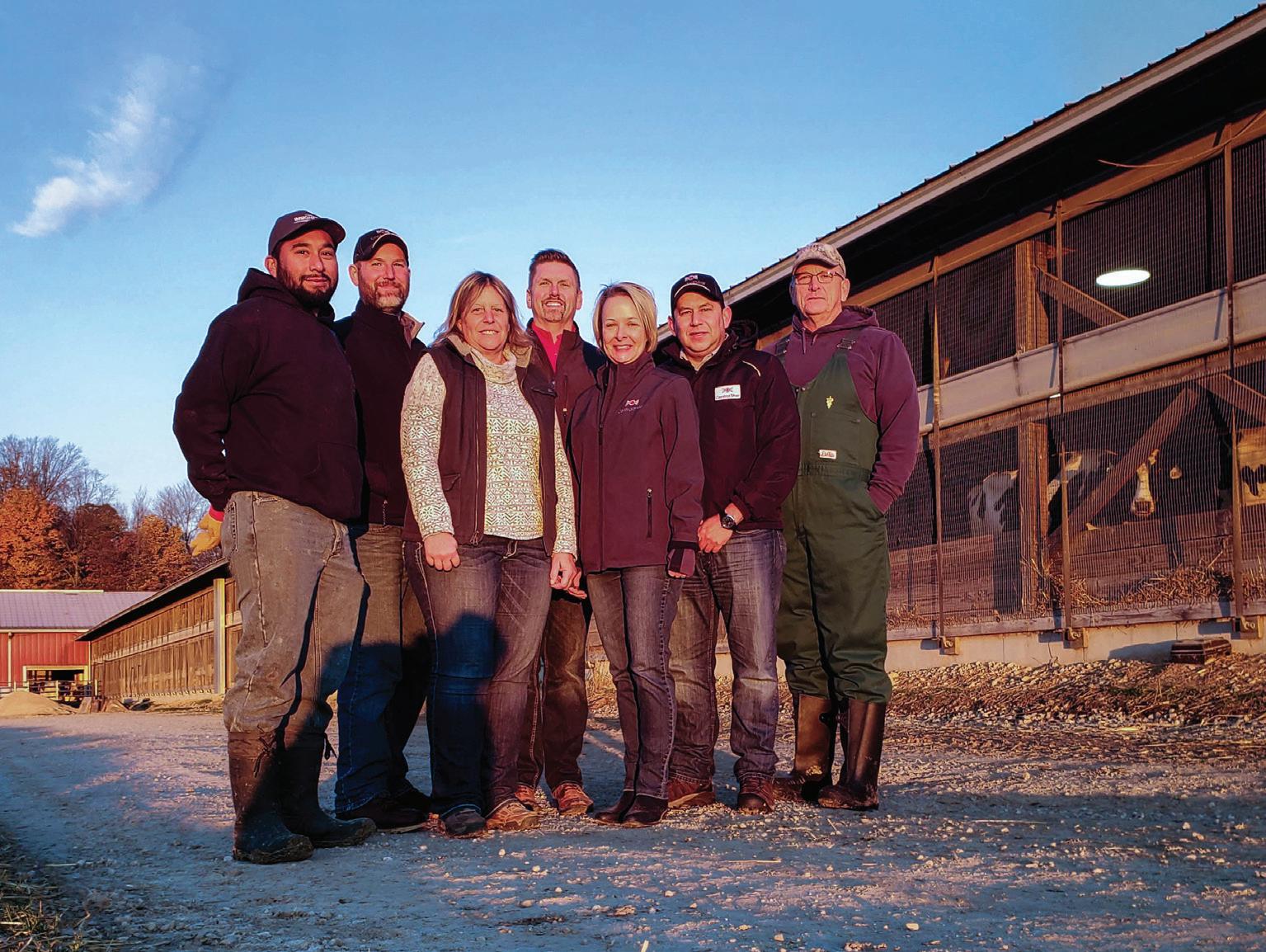
Elsinger Dairy
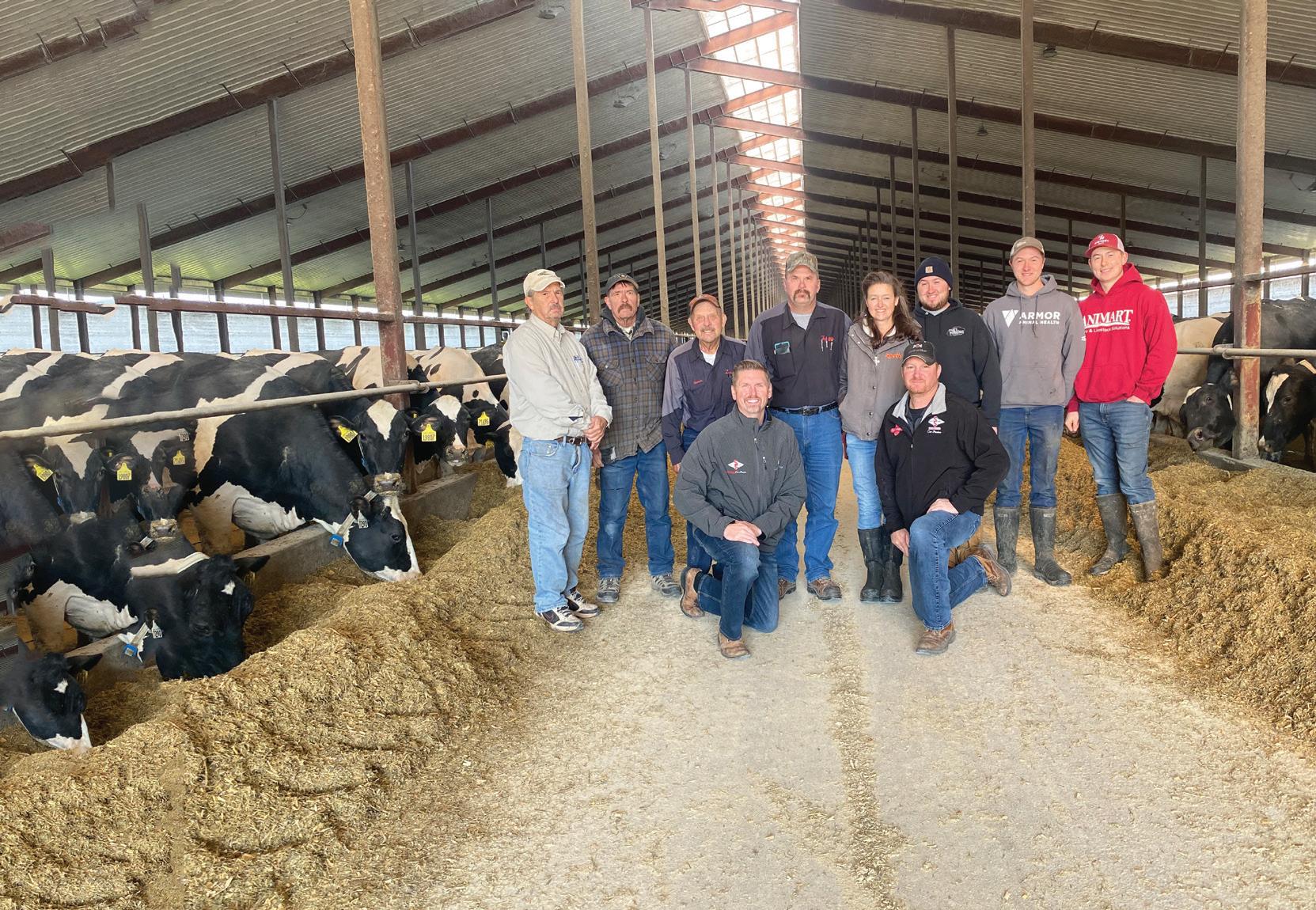
Lomira, Wis. Zahn Farms, LLC
Gillett, Wis.
“First of all, it’s a team effort,” stated Brenda Elsinger, co-owner of Elsinger Dairy. “The farm has to have a team of top-notch people, great feed and healthy comfortable animals. One hundred percent effort must be put in by everyone. From the team on the farm, to our veterinarians, nutritionist, and the crew from CentralStar… they are phenomenal. Everyone has to do their part, and they do.”
The reproduction program at Elsinger Dairy includes a combination of an electronic heat detection system, synchronization and daily tailchalk and breeding by CentralStar A.I. Specialists. The program begins with a 70-day VWP and all cows are enrolled in a G6G program for the first service. Any animal that is found open through ultrasound is resynchronized. Pregnancy checks are performed by ultrasound at 33 and 60 days and again before dry off.
Elsinger Dairy has a genomic testing program, and the CentralStar team references this data to provide mating recommendations and assist with inventory management. “We began genomic testing to identify our top-end animals to help with culling, and to keep our heifer numbers where they should be,” said Brenda. The dairy uses a genetic selection strategy that includes sexed dairy semen and beef genetics. The increased focus on genetic selection and breeding strategy has resulted in an older herd, with 40% of cows being in their third lactation or greater.
“The activity monitoring system does a fantastic job identifying cows in heat, which is matched by Eric’s (Gudex, CentralStar A.I. Specialist) technical abilities to get cows bred,” said Brian Kelroy, CentralStar Director of Consulting and Profit Strategies. “It’s no wonder conception and pregnancy rates continue to improve in this herd.”
“We are committed to being the good stewards. We want to make sure we do the best job we can for the land and the animals,” shared Brenda. “We trust the group of people we work with. That’s part of partnering with the right people to lead our farm in the right direction.” 501 - 1,500 Cows
Pregnancy Rate 32%
Photo: Andres Avila, Eric Gudex, Brenda Elsinger, Brian Kelroy, Susie Martin, Victor Lopez, and Dr. Monty Belmer. Photo Back row: Randy, Rick, Marvin, Bob, Kathy, Justin, Jesse, and Jacob Zahn. Front row: Brian Kelroy and Scott Hecker
Days Open
Voluntary Waiting Period 106
70
Conception - 1st Lactation 52%
Conception - 2nd Lactation 47% “The logistics of managing a breeding program through a remodel and expansion have been amazing here,” said Brian Kelroy, CentralStar Director of Consulting and Profit Strategies. “The growth has put an extreme amount of pressure on their employees to get cows bred, and they have rose to the challenge.”
Many factors go into good pregnancy rates, but for the dairy’s Operation Manager, Jacob Zahn there are two big reasons. “Our repro program is working because of Double Ovsynch, and having a hard working, dedicated crew in the barns. It doesn’t matter what time of day or day of the week it is, if there are cows to breed or synchronize, they get it done. I can count on our team.”
According to Jacob, “The introduction of Double Ovsynch several years ago had a powerful and immediate impact. It is definitely worth the effort and resources to do it correctly.” Along with protocol compliance, the Zahn Farms team has sought out other tools and methods to maximize compliance, while improving efficiency of the reproduction program. Among the most critical aids the farm utilizes include, parlor software that identifies cows that need synchronization shots so they can be administered while they are exiting the parlor, an electronic heat detection system; as well as a needleless injection system, keeping doses consistent.
Ultrasound is used by the farm team for pregnancy verification at 40 and 100 days, and at dry off. “We have been performing ultrasound in-house for the past five years, giving us not only the ability to preg check whenever we need to, but it has also been a huge cost saver,” said Jacob.
Reproductive outcomes are monitored through various DairyComp reports. Additionally, monthly meetings with the CentralStar team provide analysis of the data, along with identification of areas to improve.
Zahn Farms, LLC is owned by Bob and Kathy Zahn, and they farm with their sons Jacob, Jesse and Justin.
> 1,500 Cows
Pregnancy Rate 30%
Days Open
Voluntary Waiting Period
Conception - 1st Lactation 54%
Conception - 2nd Lactation 50%
Get more for your beef x dairy calves!

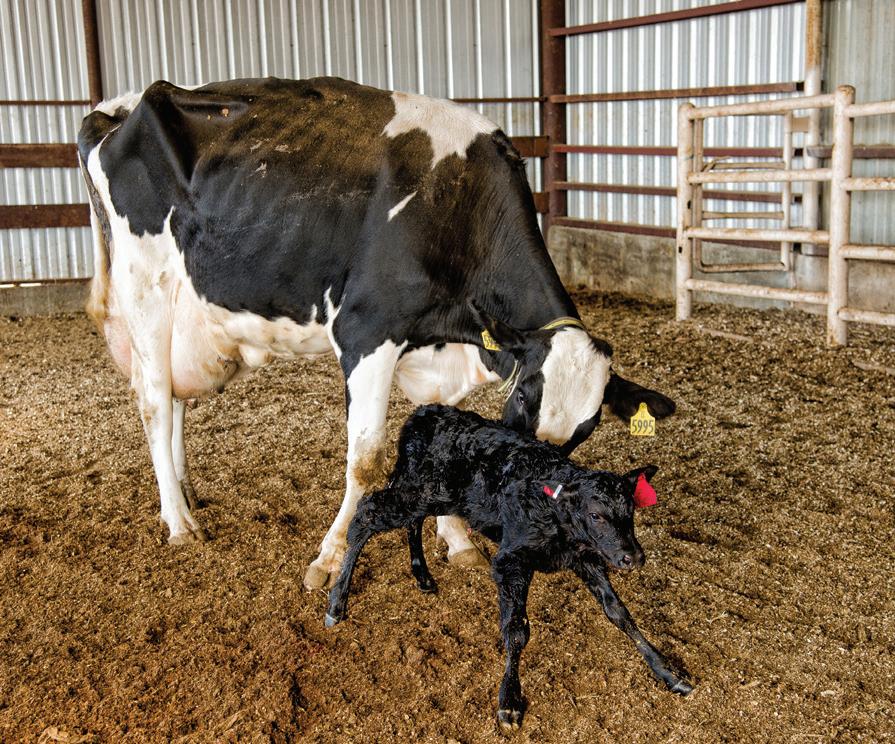
3-D Dairy, LLC Malone, Wis.
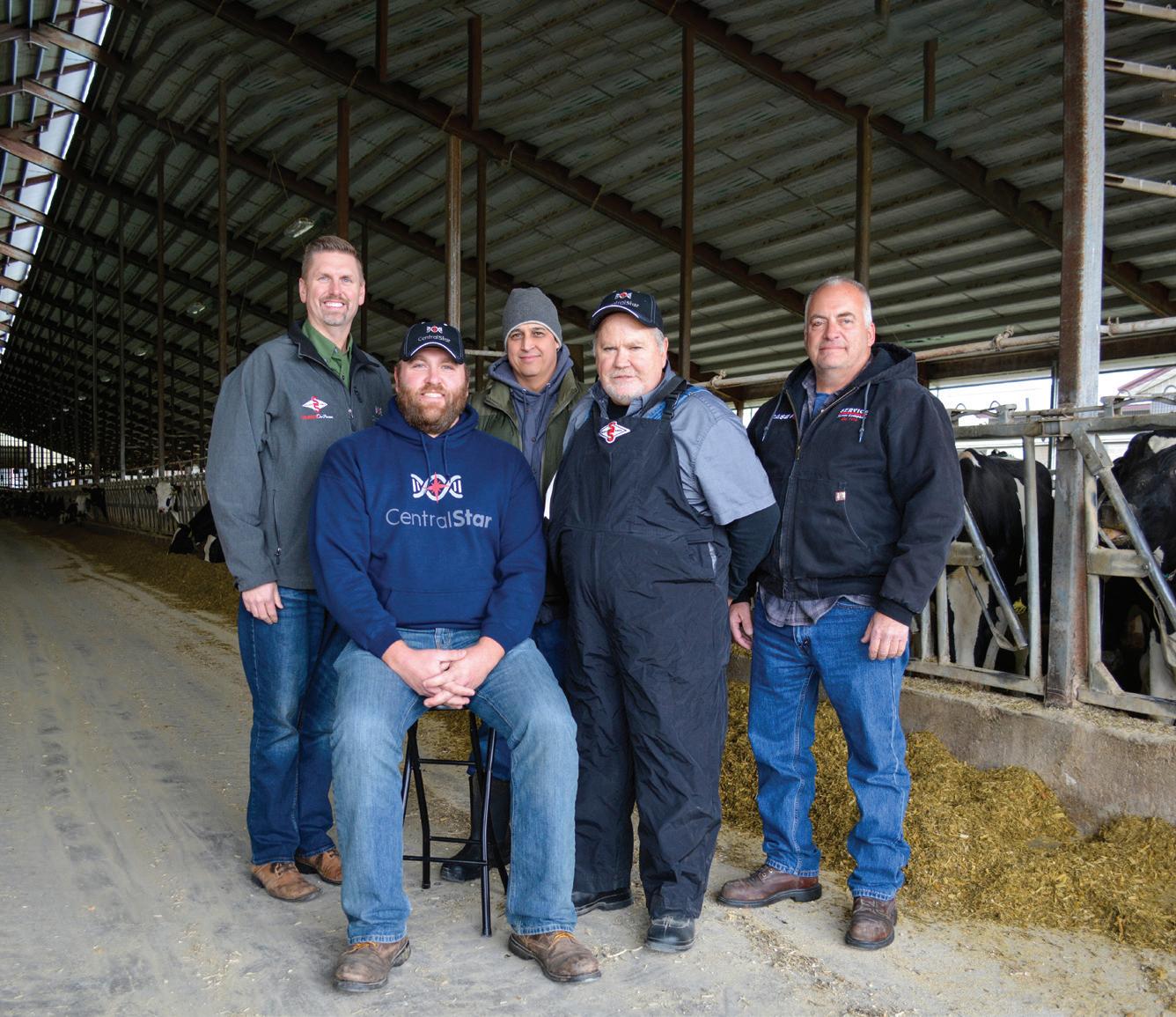
Strategic changes in genetic selection and breeding protocols have led to continual improvements in reproductive efficiency and longer living cows at 3-D Dairy. Now at 30% pregnancy rate, co-owner, John Diedrichs, shares what has made the difference.
In 2013, the dairy began utilizing genomic test results to identify the best animals in the herd. That targeted approach, combined with selecting sires with higher daughter pregnancy rate (DPR), and Dairy Wellness Profit Dollars (DWP$) has resulted in more third and greater lactation animals in the herd.
“Cows live longer now, letting me do more selective culling now than before,” said John. “We have a lot less animals coded DNB (do not breed) than ever before. Any animal with a low DWP$ value seldom makes a second lactation. I’m not choosing for them to be culled, they end up leaving the herd because of a health or repro issue.”
Along with a change in genetic selection, approximately three years ago 3-D Dairy implemented using ultrasound on all animals prior to breeding to identify if a cow has ovulated. During bi-weekly herd health, the veterinarian checks to see if a cow has a CL. If a CL is identified they get a dose of prostaglandin. If not, they are enrolled in Double Ovsynch.
The reproduction program at 3-D Dairy includes daily walk, chalk and breeding by CentralStar A.I. Specialists, Kurt Barnes and Aaron McMillan. “Our technicians are doing a great job, and so are our employees. Obviously, everyone knows shot compliance is very important, and I’m fortunate to have really good employees that I trust that are doing a good job,” shared John. 3-D Dairy is owned by John, Joe and Bill Diedrichs.
> 1,500 Cows

Photo Back Row: Brian Kelroy, Herdsman Lupe Cortes, and owner John Diedrichs. Front Row: Aaron McMillan and Kurt Barnes.
Pregnancy Rate 30%
Days Open 109
Voluntary Waiting Period 71
Conception - 1st Lactation 50%
Conception - 2nd Lactation 47% ProfitSOURCE beef sires are specifically selected for use on dairy cows with a focus on traits needed to earn top dollar for your beef x dairy calves.

ProfitSOURCE Partners, TD Beef and Power Genetics, offer improved, secure pricing for qualifying calves.
ProfitSOURCE connects packer interest with improved uniformity and cutability along with age, sire and source traceability through RFID.
ProfitSOURCE calf care guidelines ensure feeding and carcass performance, adding value along the supply chain.
CentralStar consultants are ready to help you determine the best breeding plan to ensure the highest profitability for your herd. Ask your CentralStar team for a ProfitSOURCE sire list and how to put a plan in place for your dairy!








